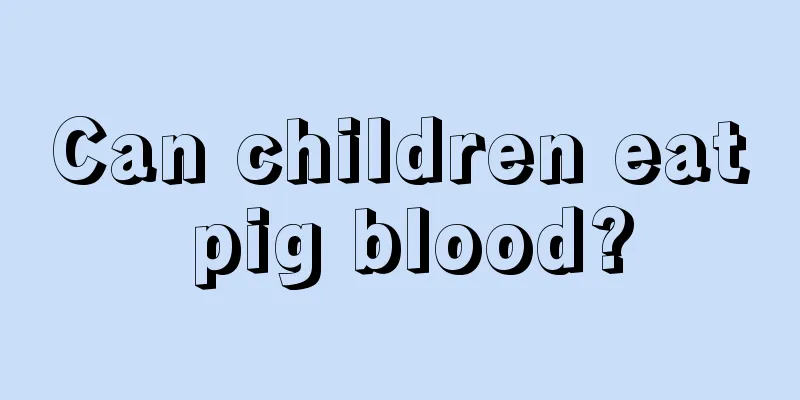What should children eat to grow taller

|
As a parent, the first thing you need to understand is that a child’s height is clearly hereditary, that is, congenital reasons are an important factor in a child’s height, followed by acquired reasons. In order to ensure that children can avoid the problem of height growth, they should eat more foods that have the effect of calcium supplementation, so as to promote the bone development of children. There are many such foods, the most common of which are milk and soy products, as well as high-protein foods. 1. Milk Milk is rich in calcium, a nutrient that builds bones, and is easily absorbed by growing children. Although drinking milk cannot guarantee that you will grow taller, you will definitely not grow taller if your body lacks calcium. So there is no harm in drinking more milk. Drinking 3 glasses of milk a day can provide the calcium necessary for growth. 2. Eggs Eggs are the most readily available high-protein food. Many children like to eat eggs, especially egg whites which are rich in protein and are very beneficial to children's growth. Some mothers worry that the cholesterol in egg yolks is bad for their children, but children in their growing years do not need to worry about cholesterol levels. It is more appropriate to eat 1-2 eggs a day. 3. Black soybeans Soybeans are recognized as high-protein food, among which black soybeans have a higher protein content and are a good food for growth. You can add it when cooking rice, or grind it into soy milk to drink. 4. Sardines Sardines are rich in protein and calcium. The calcium in sardines is easier to digest and absorb than the plant calcium contained in other seaweeds, and is very helpful for children's growth. In addition, seafood such as anchovies, whitebait, and smelt that can be eaten with both bones and meat are all good foods. If you feel that the amount of whitebait you eat as a dish is limited, you can grind it into whitebait powder and drink it with milk. 5. Spinach Spinach is rich in iron and calcium. Many children don’t like to eat spinach, so don’t make it into a cold dish. Instead, you can cut it into thin strips and stir-fry it with rice, or add it to seaweed rice rolls. 6. Oranges Rich in vitamin C, it helps in the absorption of calcium. However, oranges are seasonal fruits in autumn and winter, so you can choose other seasonal fruits such as strawberries, pineapples, grapes, kiwis, etc. according to different seasons. This is a good way to get your vitamins. 7. Carrots Rich in vitamin A, it can help protein synthesis. Children generally don’t like to eat whole carrots, so they can be made into different dishes. For example, if you don’t like carrot juice, you can make juice with apples to neutralize the taste of carrots. In addition, when cooking chicken, pork, and beef, you can cut the carrots into thin strips and stir-fry them together. This not only adds seasoning but also makes it more nutritious. |
<<: What to do if your child has a fever while teething
>>: Why does my child’s face always turn red?
Recommend
What kind of water should children drink when they have a fever?
When children have a cold or fever, parents are p...
Should newborns sleep with pillows?
Pillows are very important sleeping tools in peop...
How to observe and treat infants with fever and convulsions
The health of babies affects the mood of parents....
How to deal with itchy nose in children
What are the measures to deal with children's...
Oral liquid to increase children's immunity
Children are in the early stages of development a...
What should children with iron deficiency anemia eat?
Now with the development of economic life, people...
What causes drooling in children?
The problem of children drooling is actually a co...
What are the reasons why babies always sweat?
Many parents find that their children often sweat...
What to do if your child has low blood sugar
Children are more likely to get sick because of t...
What medicine should I use for baby's mouth eczema
Eczema is a skin disease that mainly relies on me...
Dietary care for children with cough
Cough is one of the most common symptoms of exoge...
What are the symptoms of cough after a child catches a cold?
Colds and coughs are common diseases in children,...
What to do if your child's nose is always blocked
More and more people are suffering from rhinitis,...
Is it okay to take a shower after vaccination?
The purpose of vaccination is to prevent children...
Reasons why children cry at night
Parents all know that raising children is a very ...









